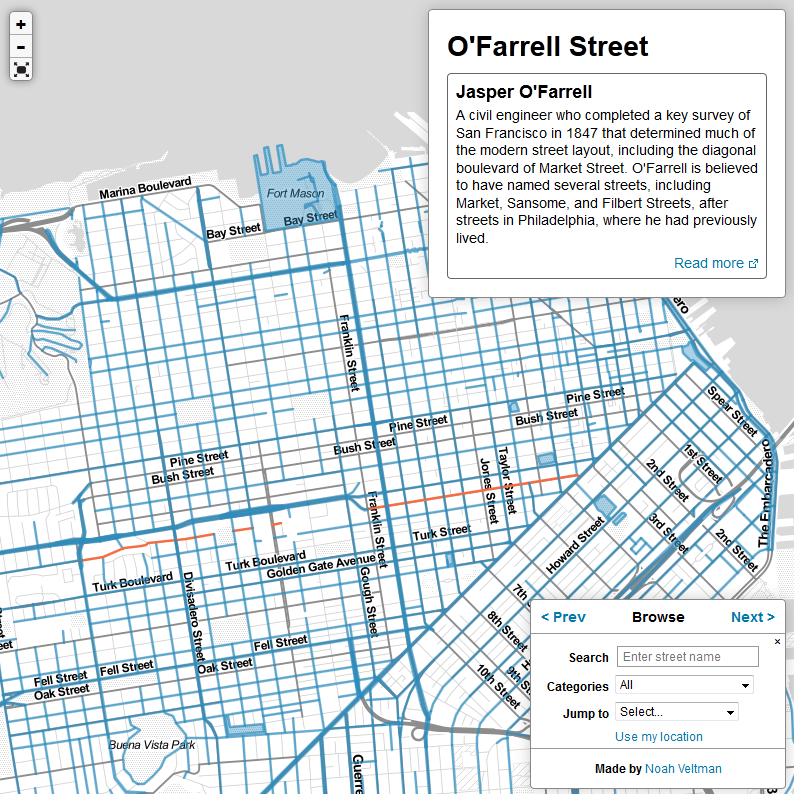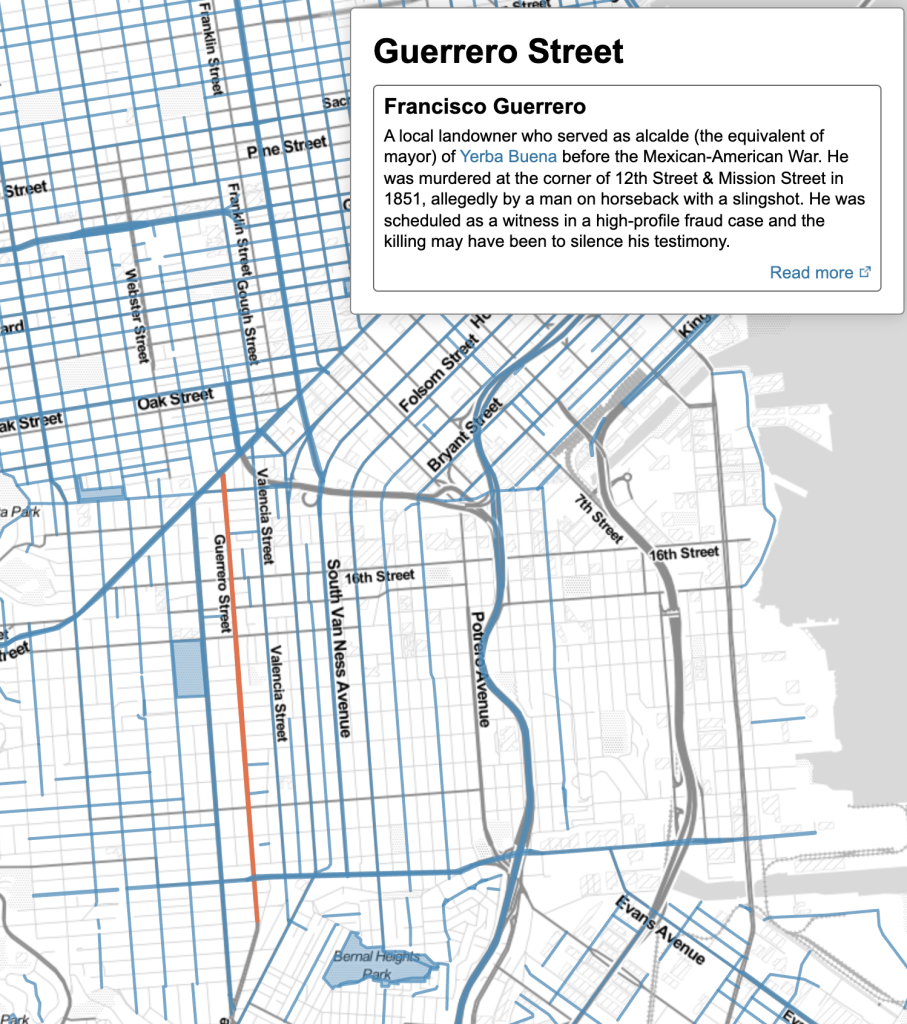While my father and I were discussing Spanish language place names (like the City of Manteca (which translates as LARD), or the town of Salida (which means exit, and various synonyms of that)), we started talking about street names in San Francisco that are ordinary Spanish words (Embarcadero (pier), Potrero (pasture), etc.). My father asked who Guerrero street was named after in the Mission.
That brought me to this work of awesomeness by Noah Veltman. It’s a map (and/or a list) of the streets of San Francisco, with brief biological remarks, and links to sites like Wikipedia.

The interface is great! For someone like Guerrero, the street is highlighted in red, and the biographical box is concise:

The article on Guerrero at Wikipedia suggests that he was murdered (YIKES!) by (greedy) Americans trying to invalidate land grants of the Californios (people of California who resided in the area already/previously, while it was controlled by Spain and/or Mexico). (My brain is still saddened by and stuck on the idea of murder by slingshot – I believe it, I just have rarely seen effective slingshots, which somehow makes the idea even worse…)
This site is clearly a labor of love, and I’m happy to have encountered it.

